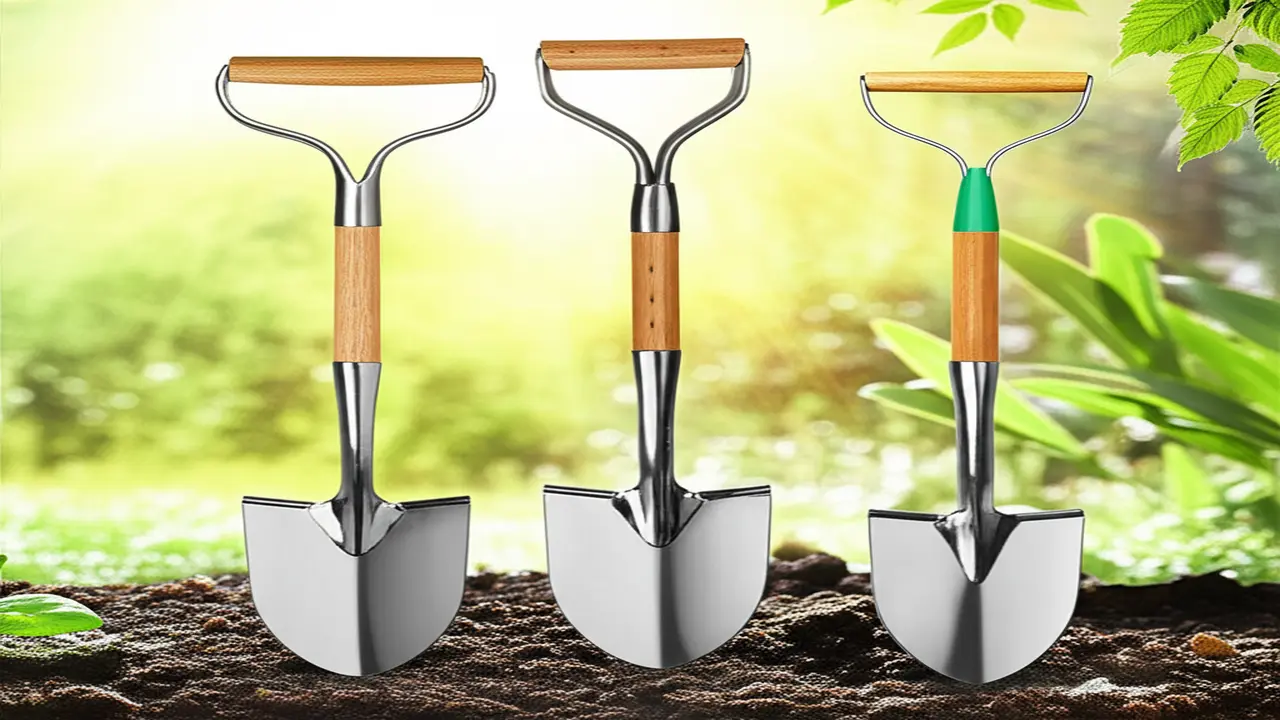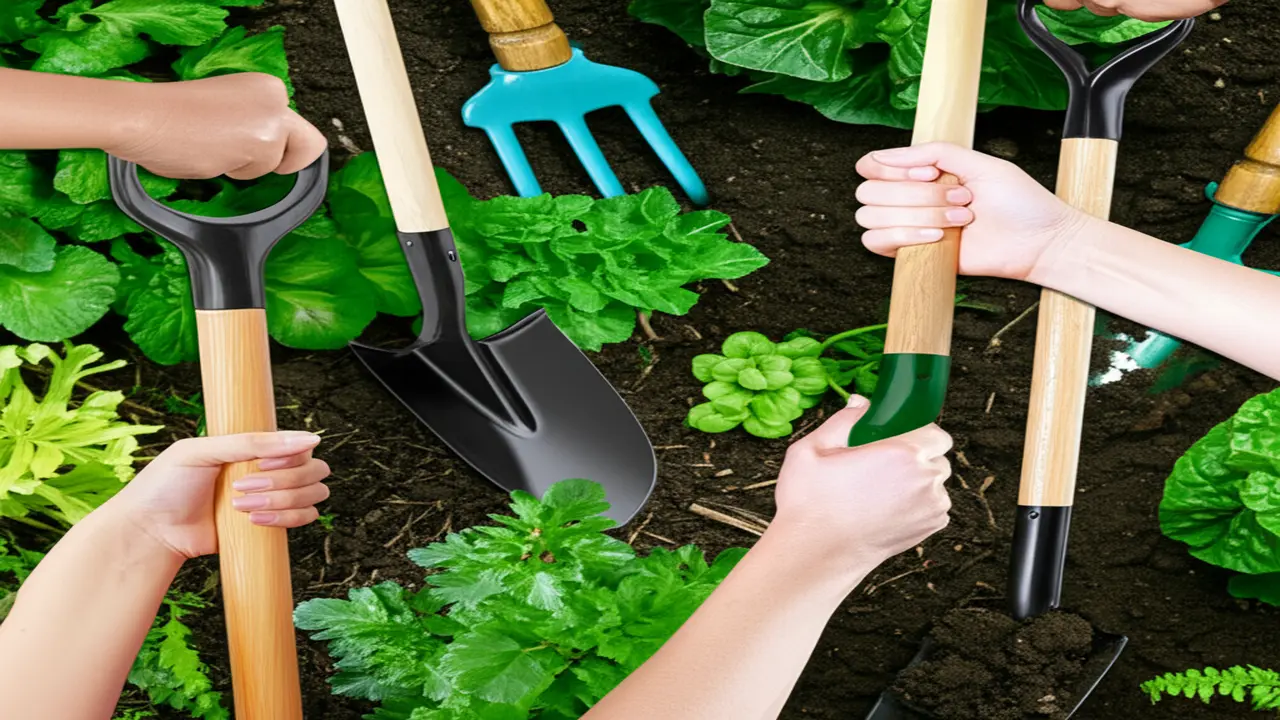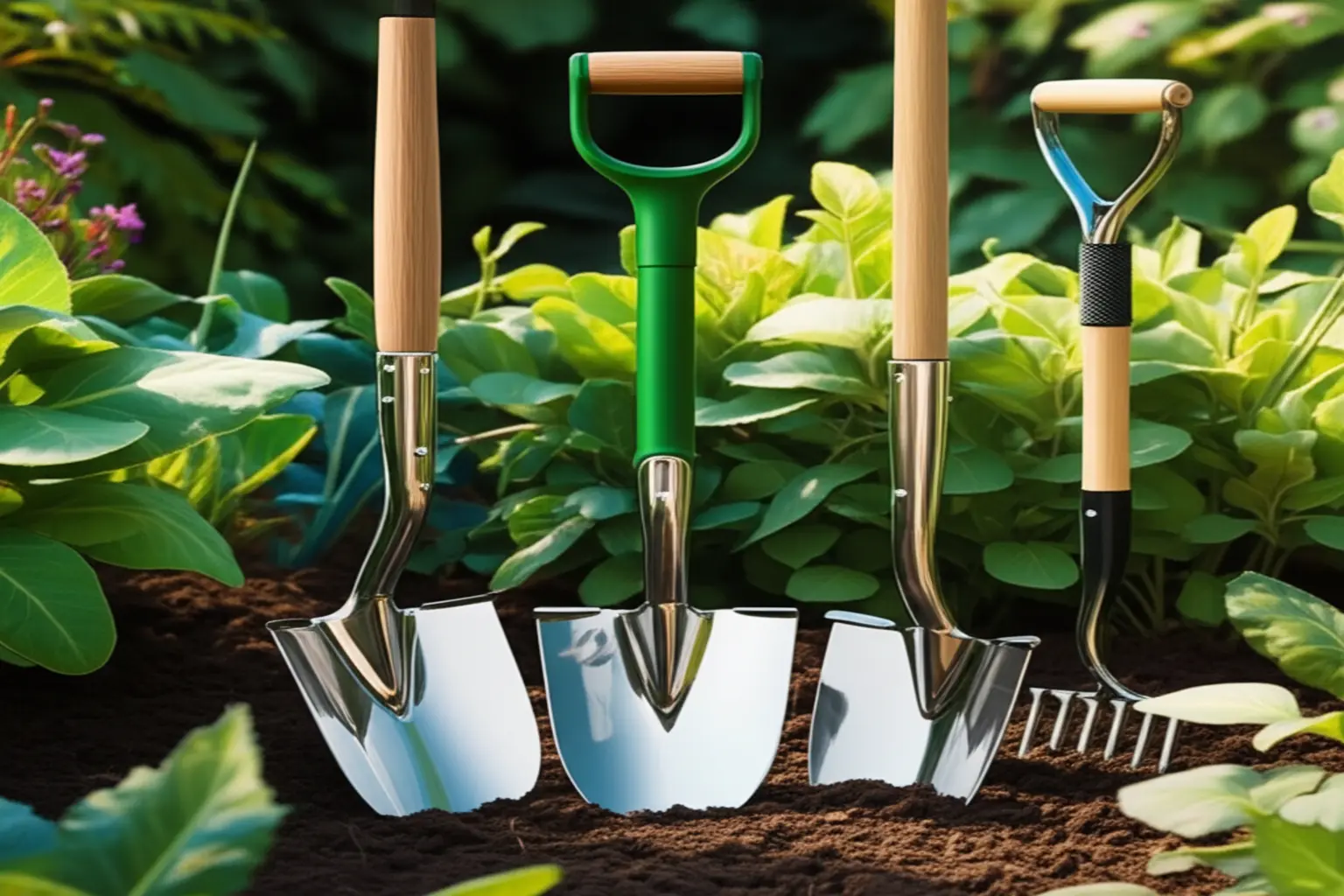
1. Importance of Garden Spade Handle Types
2. Overview of Primary Handle Shapes
Garden spade handle types are crucial in determining comfort, efficiency, and suitability for specific gardening tasks. The primary handle shapes include D-handle, T-handle, long straight handle, and ergonomic or cushioned designs. Each offers distinctive characteristics tailored to different uses and user preferences.
The D-handle, also known as the YD-handle, looks like the letter “D” with a closed loop grip. It provides excellent control for tasks like edging and lever action digging. Its shape allows for a secure handhold, reducing slippage. However, it may limit wrist rotation, making it less ideal for prolonged use.
The T-handle features a horizontal grip perpendicular to the shaft, ideal for soil turning and scooping. This shape offers a natural wrist position, reducing strain during tasks that require downward force. Its ergonomic benefits are pronounced, but it can be less versatile for precise digging compared to the D-handle.
Long straight handles are the traditional, simple wooden or metal shafts extending typically 36 to 48 inches. These handles provide superior leverage, especially beneficial for taller users and deep digging. The trade-off is reduced maneuverability and control in tight spaces.
Ergonomic and cushioned handles incorporate padding, contoured shapes, and sometimes offset grips to minimize hand fatigue and strain. Such designs improve comfort significantly during extended gardening sessions, making them popular among hobbyists and professionals seeking ease and injury prevention.
Understanding these garden spade handle types helps gardeners choose the right tool for their specific needs. For further reading on spade comfort and design, check out articles on ergonomic garden spades and the best garden spades 2025. This knowledge ensures better efficiency, safety, and enjoyment in gardening activities.
3. Common Materials Used for Spade Handles
Garden spade handle types significantly affect tool performance and user comfort. The most common materials used are wood, fiberglass, steel, and composite polymers, each bringing unique characteristics suited to different gardening tasks.
Wood handles, typically made from ash, oak, or hickory, offer natural shock absorption and a warm feel. These hardwoods are durable but require regular maintenance like sanding and oiling to prevent splintering and prolong lifespan. Wood handles are favored for their balance and traditional grip.
Fiberglass handles stand out for their weather resistance and lightweight nature. They do not rot or warp and reduce handle vibrations, making prolonged digging easier. However, they can splinter over time, especially if not handled carefully under heavy use.
Steel or metal handles deliver exceptional strength and durability. Their rigid construction benefits heavy-duty garden tasks but transmits more vibration to the hands, potentially causing fatigue. Steel handles tend to be heavier and may need coating to prevent corrosion.
Composite and polymer handles combine engineered materials to optimize weight, grip, and strength. These handles often feature textured surfaces for better hold in wet conditions and can be designed to balance flexibility and toughness. Their variability depends on specific resin or fiber blends used.
Choosing the right garden spade handle types depends on your gardening style, typical soil conditions, and personal comfort preferences. For more insights on ergonomic options, consider exploring ergonomic garden spades.
4. How to Choose the Right Spade Handle Type for Your Needs
5. Maintaining Your Garden Spade Handle
6. Additional Insights: Handle Design Evolution and Manufacturer Innovations
The evolution of garden spade handle types reflects significant advances in materials and ergonomic design that enhance comfort and durability. Traditionally, spade handles were made from hardwoods like ash, valued for strength but sometimes heavy and prone to splintering. As gardening demands increased, manufacturers experimented with composite materials and lightweight metals such as aluminum, reducing fatigue during prolonged use.
Ergonomics now play a central role in handle design. For example, D-shaped handles improve grip stability, reducing wrist strain during digging. Some modern spades feature shock-absorbing grips that lessen the impact on users’ hands, a notable improvement based on biomechanical research. Furthermore, adjustable-length handles cater to different user heights and working preferences.
Leading brands integrate materials like fiberglass for high tensile strength paired with rubberized coatings to offer a firm, comfortable hold even in wet conditions. Such innovations not only extend the tool’s lifespan but also optimize user efficiency and safety. To explore proven ergonomic options, take a look at top-tier ergonomic garden spades that elevate comfort without compromising performance.
This progression shows manufacturers responding to both technological progress and user needs, ensuring contemporary garden spades combine tradition with functional innovation.

7. User Perspectives on Garden Spade Handles
Garden spade handle types impact user comfort, control, and fatigue in garden tasks significantly. Gardeners frequently report that handles made of different materials and designs offer varied experiences during digging, transplanting, or edging work. Wooden handles are favored for their natural feel and moderate weight but can cause blisters during prolonged use. Fiberglass handles provide durability and shock absorption reducing hand fatigue, especially during heavy digging. Ergonomic handles, often D-shaped or padded, improve grip and control, minimizing wrist strain over time.
Users highlight that long handles grant better leverage with less effort, important when working in tough soil, while short handles enhance maneuverability in confined spaces. The choice between straight versus T-shaped grips also reflects user priorities —straight handles suit precision work, whereas T-grips offer superior power transfer for heavy-duty tasks.
Real gardener experiences indicate that the best garden spade handle types balance strength, comfort, and ease of use tailored to specific gardening needs. Efficient handle design supports longer work duration without discomfort, essential for both amateur and professional gardeners. For further practical advice on complementing hand tools with garden spades, see our guide on best hand cultivators.

